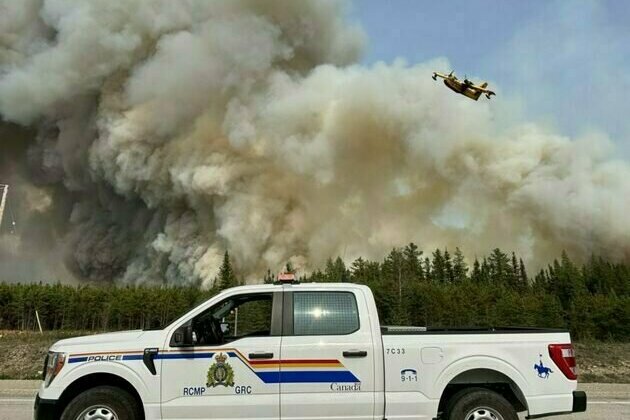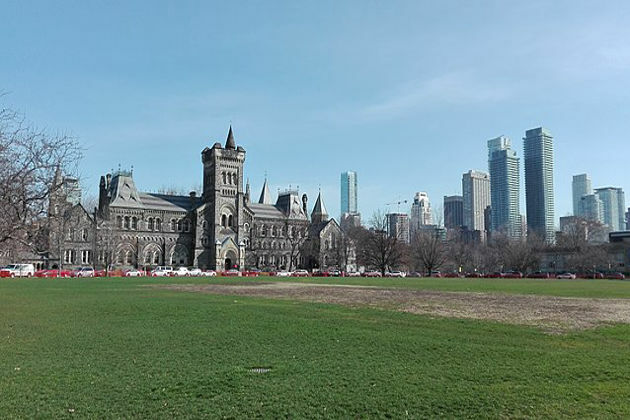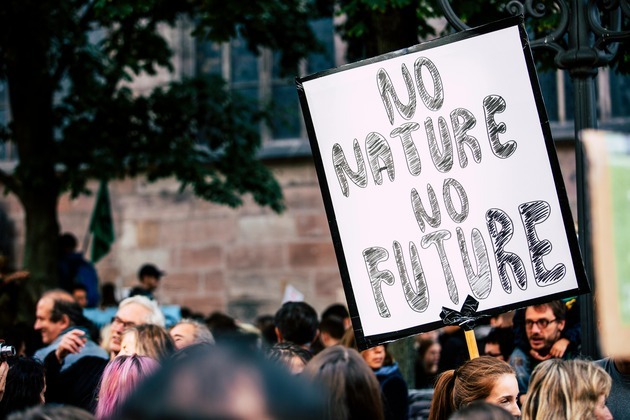What Wildfire Emissions Mean for Canada's Climate Progress
The Energy Mix
30 Jun 2025, 09:34 GMT+10

As Canadians are all too aware, the return of spring and summer also marks the return of wildfire season. This summer has already seen devastating wildfires impact people in communities across the country, including the Prairie provinces, British Columbia, eastern Ontario, and the territories. Smoke from these fires has affected air quality in many cities in Canada and the U.S. midwest and northeast regions. Officials have warned that this year's season is on track to the second worst on record, in terms of areas burned.
Wildfires are both a symptom and an accelerant of climate change, writes Ross Linden-Fraser at 440 Megatonnes. A symptom, because while no single wildfire is exactly caused by climate change, they are made likelier and more intense by the increasingly dry and hot conditions of Canada's changing climate. And wildfires accelerate climate change too, as they are massive sources of carbon emissions.
Because accounting for those emissions can be complex, Linden-Fraser takes a deeper dive into how Canada counts wildfire emissions and what that means for the country's climate progress.
Every year, Canada's National Inventory Report on greenhouse gas emissions contains an entry for the carbon dioxide released by wildfires. These emissions are tracked but not counted towards Canada's official greenhouse gas targets-more on that in a moment.
As Figure 1 shows, the numbers fluctuate significantly, but they can be enormous.
Canada's 2023 wildfires are the most pointed example. According to the latest National Inventory Report, they released nearly 1 gigatonne-or one billion tonnes-of carbon dioxide from Canada's forests. That's a staggering sum that far exceeded the total emissions from all other sources in Canada in 2023. If Canada's forest wildfires were a country, they would have been the world's eighth-largest emitter that year.
The emissions data for Canada's 2023 forest fires are all the more sobering considering that they are incomplete. They are not wrong, but they are not designed to count everything.
There are three main categories of wildfire emissions that Canada does not count.
First, it does not estimate the emission of gases other than carbon dioxide. Though that is the most significant gas released by wildfires, these fires release other gases, including methane-a powerful greenhouse gas.
Second, Canada's estimates of wildfire emissions only reflect the impact on forests. There are fires on other landscapes like prairies or wetlands, but the inventory does not currently estimate them. Some of these landscapes, like peatlands, are recognized as particularly important stocks of carbon. Fires are likely releasing carbon from some of these lands, but they are not currently tracked in the country's inventory
The third category of uncounted emissions is more abstract. These are emissions from what are called unmanaged lands. The reason that they go uncounted has to do with the international accounting rules that apply to emissions from forests and other landscapes. These emissions fall into a category known as land use, land-use change, and forestry emissions, or LULUCF. Countries are only required to report LULUCF emissions from managed lands, meaning areas subject to direct human intervention through agriculture or parks (or fire suppression).
Every country has some flexibility to decide what counts as managed land, and in Canada more than 30% of forest lands are considered unmanaged. There is currently no official way to measure the carbon stored or released on this territory.
All of this means that there are additional wildfire emissions in Canada that are not being officially estimated. And there is a case for tracking emissions from other gases, other landscapes, and unmanaged forests. Doing so would be useful for understanding the impacts of fires on Canada's natural landscapes, and those emissions on the atmosphere.
But even if Canada was estimating these emissions, none of them would show up on the country's balance sheet.
Canada's official report on greenhouse gases dutifully records LULUCF emissions, but excludes them from the country's total emissions. Canada is not alone: the country follows standard international guidance for how these inventories accounted for.
Part of the rationale for excluding LULUCF emissions is that they are often due to causes that are largely out of direct human control, such as forest fires and insect outbreaks. LULUCF emissions are also more uncertain to estimate than emissions from other sources like vehicles or industry. On top of that, these emissions are so variable that they could obscure other trends in the inventory over which countries have more direct control.
This arrangement for reporting emissions may seem strange, given emissions from forest fires will amp up the severity of global warming, but it's founded on a logic rooted in clarity and responsibility. The global emissions accounting system is intended to focus countries on the emissions that can be most accurately estimated and most easily controlled by national action. (There are also critiques of how Canada accounts for the emissions it does estimate, but the estimates themselves are generally considered reasonable).
What does all this mean for Canada's climate progress?
It's obvious that wildfires are a significant problem for Canadians as well as for the climate. And just as rising temperatures make the fires worse, so too do the fires worsen climate change.
Adaptation measures, including forest management programs to reduce the spread of wildfires and policy changes that reduce the risk to communities, are clearly necessary.
But adaptation alone still leaves the larger problem of the emissions from fires that will burn anyways. If those emissions cannot easily be addressed, what is to be done? The scale of the threat leaves only one good option: for societies to reduce the emissions that they can control.
It is precisely because some emissions cannot be easily avoided that we must tackle the emissions we can reduce. Climate mitigation cannot stop all wildfires, but it can slow their advance, and put limits on a problem that-if left unchecked-would not stop growing. Every gram of carbon that can be kept out of the atmosphere compensates for every gram that is emitted. Every ounce of mitigation mitigates.
The message of Canada's wildfires is not that there is little meaning to our efforts. It is that those efforts are more necessary than ever.
This post from the Canadian Climate Institute's 440 Megatonnes blog was published under Creative Commons licence.
Source: The Energy Mix
 Share
Share
 Tweet
Tweet
 Share
Share
 Flip
Flip
 Email
Email
Watch latest videos
Subscribe and Follow
Get a daily dose of Canada Standard news through our daily email, its complimentary and keeps you fully up to date with world and business news as well.
News RELEASES
Publish news of your business, community or sports group, personnel appointments, major event and more by submitting a news release to Canada Standard.
More InformationInternational
SectionCanadian option offered to Harvard graduates facing US visa issues
TORONTO, Canada: Harvard University and the University of Toronto have created a backup plan to ensure Harvard graduate students continue...
Israel should act fast on new peace deals, Netanyahu says
JERUSALEM, Israel: Israeli Prime Minister Benjamin Netanyahu says that Israel's success in the war with Iran could open the door to...
UN offer rejected in Dreamliner crash investigation
NEW DELHI, India: India has decided not to allow a United Nations (UN) investigator to join the investigation into the recent Air India...
UN climate agency gets 10 percent boost amid global budget cuts
BONN, Germany: Despite widespread belt-tightening across the United Nations, nearly 200 countries agreed this week to increase the...
Mexican President orders review of SpaceX environmental impact
MEXICO CITY, Mexico: Mexican President Claudia Sheinbaum said this week that her government is investigating possible environmental...
Historic ISS mission launches with crew from 4 different nations
CAPE CANAVERAL, Florida: In a landmark flight for three nations and a veteran U.S. spacefarer, a four-member astronaut crew launched...
Sports
SectionKane fires Bayern past Flamengo to set up Club World Cup clash with PSG; Messi's Inter Miami thrashed by former side
Florida [US], June 30 (ANI): Harry Kane scored twice to guide Bayern Munich to a 4-2 victory over Flamengo at the Club World Cup in...
Taylor Swift, Travis Kelce enjoys date night ahead of upcoming NFL season
Washington DC [US], June 30 (ANI): Taylor Swift and Travis Kelce were recently spotted spending quality time together in New York....
(SP)AUSTRIA-INNSBRUCK-SPORT CLIMBING-IFSC WORLD CUP-WOMEN'S LEAD-FINAL
(250630) -- INNSBRUCK, June 30, 2025 (Xinhua) -- Erin McNeice of Great Britain competes during the women's lead final at the International...
(SP)U.S.-ATLANTA-FOOTBALL-FIFA CLUB WORLD CUP-ROUND OF 16-PARIS SAINT-GERMAIN VS INTER MIAMI CF
(250630) -- ATLANTA, June 30, 2025 (Xinhua) -- Lionel Messi (L) of Inter Miami CF reacts during the round of 16 match between Paris...
(SP)U.S.-MIAMI-FOOTBALL-FIFA CLUB WORLD CUP-CR FLAMENGO VS BAYERN MUNICH
(250630) -- MIAMI, June 30, 2025 (Xinhua) -- Wesley (L) of CR Flamengo tackles during the round of 16 match between CR Flamengo of...
Paris Saint-Germain reach Club World Cup quarter-finals
ATLANTA, 29th June, 2025 (WAM) -- Paris Saint-Germain advanced to the quarter-finals of the FIFA Club World Cup after a dominant 4-0...













